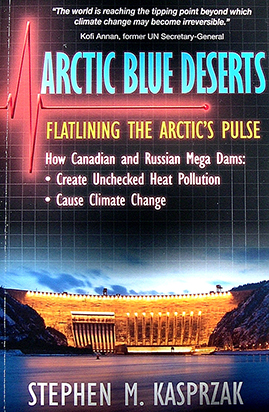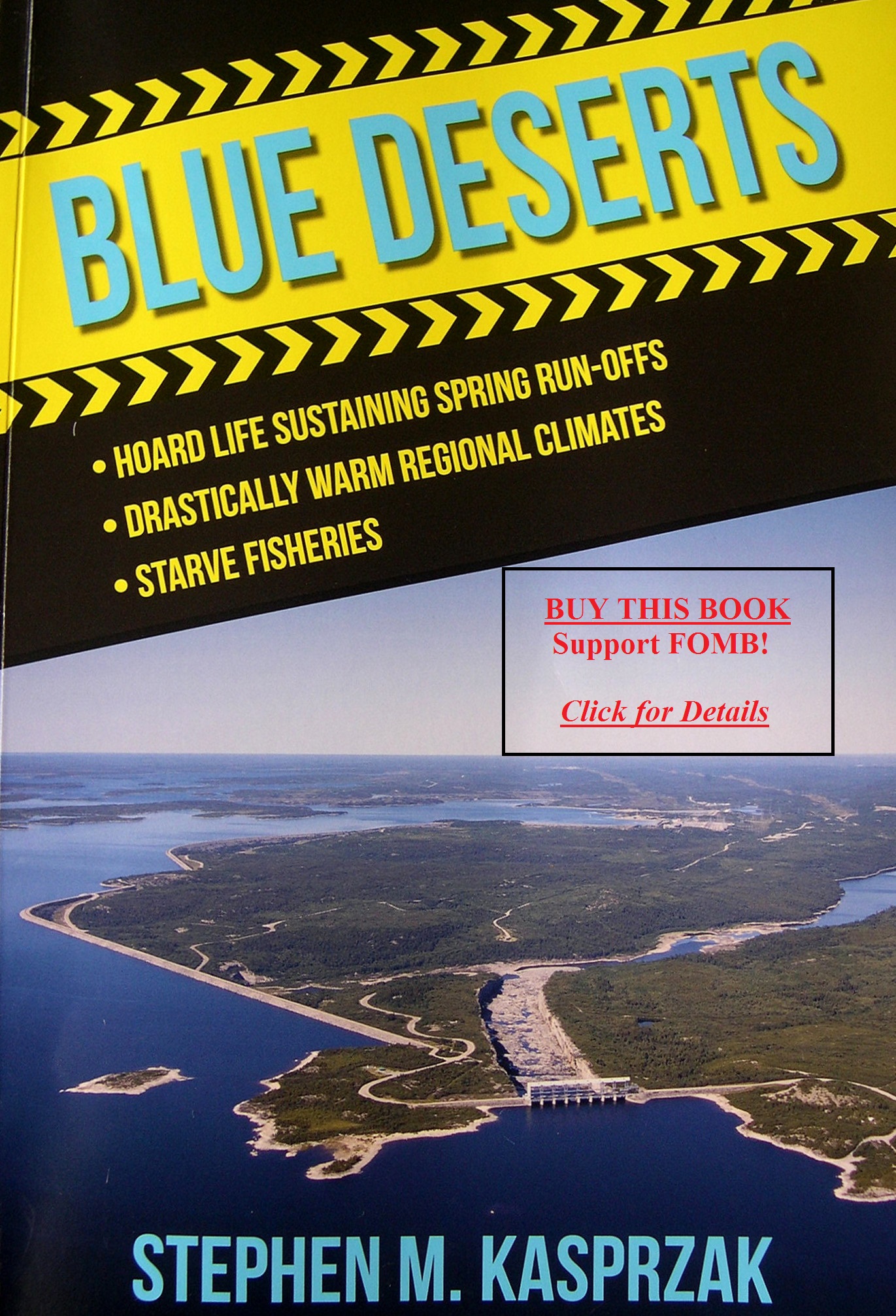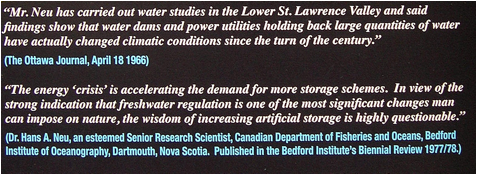 |
|||||||||||||||

Arctic Blue Deserts and Blue Deserts
By Steve Kasprzak
To grow awareness of this important and timely subject and to help FOMB’s work, author Steve Kasprzak from Friends of Sebago Lake is allowing us to sell his books. Thanks, Steve!!!
Buy now through PayPal (click on photos)
or by sending a check for $20.00
to FOMB at P.O. Box 233, Richmond, ME 04357.
Please write “Blue” or “Arctic” on your memo line
depending on which book you would like,
and be sure to include your mailing address.In Steve Kasprzak’s first book Blue Deserts, he educates the reader on multiple profoundly negative effects of mega dam riverine impoundments and the anthropogenic altered flows associated with them. Adverse effects include cultural and terrestrial habitat devastation, restriction or elimination of nutrient transfer between fresh and saline environments, local and regional climate changes, ocean fishery decline, interference with haline circulation flows and possible effects on world climate change.
In his follow-up volume Arctic Blue Deserts, Kasprzak takes a deep dive into “blue desert” effects from the circumpolar regions of Canada and the former Soviet Union. Alterations in these two areas have a critical impact on the Arctic Ocean. This body of water, while a small percentage of the world’s seas, plays an outsize role in climate change both due to its ice cover (now melting) and influence on currents affecting the Atlantic Ocean. As we are again finding, the balance of nature is indeed very precarious and Arctic Blue Deserts explains in great detail, how mega dam reservoirs and altered river flows feeding the Arctic Ocean may have significant worldwide consequences. Read this well-researched book.
The goal of this book is educating the public on the profound ecological damage caused by damming the world’s river, in particular by mega-dams at high latitudes. Hoarding of massive water volumes creates blue deserts behind the dams, but also makes previously fertile estuaries, gulfs, and coastal waters relatively barren, as nutrients from spring runoff, vital to the food chain, are withheld during the short natural growing season. Water hoarding has destroyed the ocean’s most biologically productive regions and the culture and economies of many indigenous peoples. The only things “green” about big hydro are the $100 dollar bills coming out of dam turbines. Hydro Quebec is a prime example. Unnatural flows may also be helping to drive climate change.“All other perceived ills: pollution, overfishing, and, yes, even global warming, are secondary in importance to fundamental change brought by dewatering our global rivers.” —Dr. M.A. Rozengurt, Russian oceanographer (“Agonizing Coastal Sea Ecosystems: Understanding the Cause; Placing the Blame!” October 2003).
Buy now through PayPal (click on photos)
or by sending a check for $20.00
to FOMB at P.O. Box 233, Richmond, ME 04357.
Please write “Blue” or “Arctic” on your memo line
depending on which book you would like,
and be sure to include your mailing address.
Sarah Stapler



